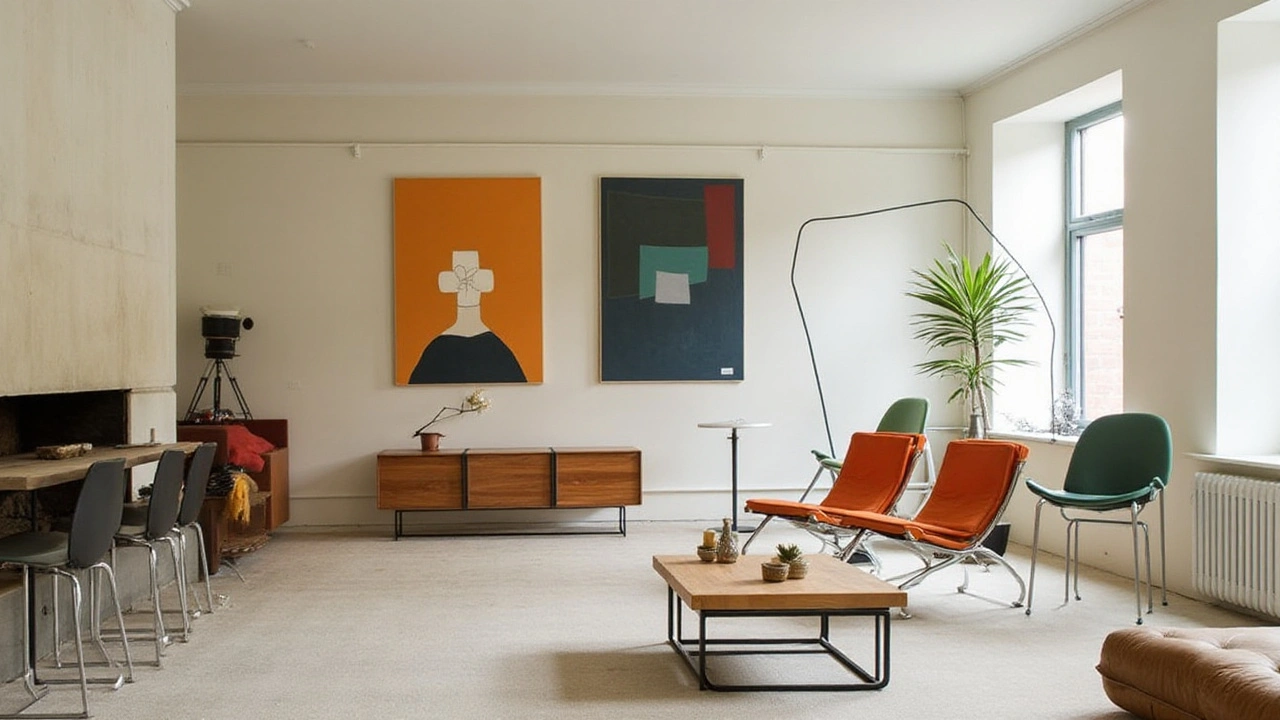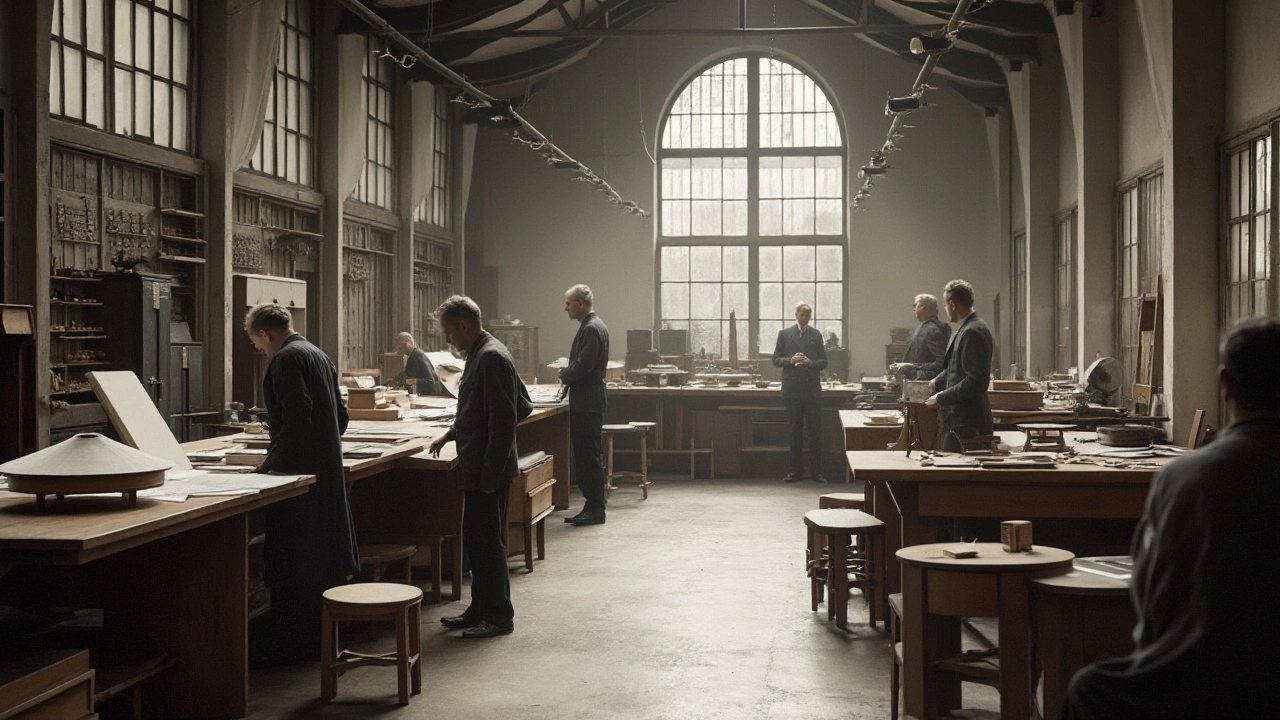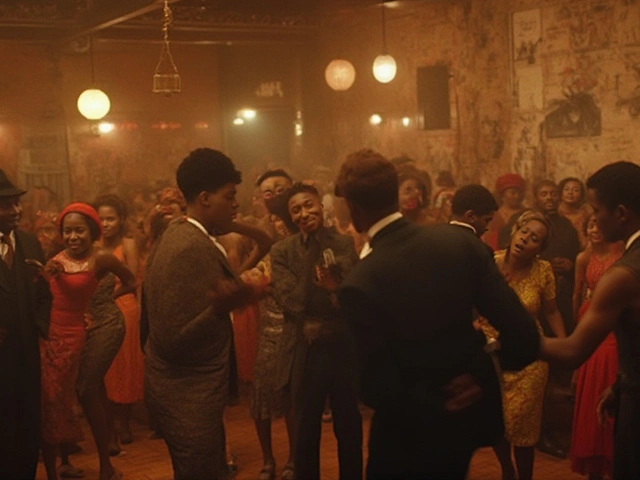When the Bauhaus school was founded in 1919 in Weimar, Germany, it ignited a design revolution that has continued to resonate for over a century. Rooted in the idea of integrating arts and crafts with fine arts, Bauhaus sought to break down the boundaries between traditionally separate disciplines. The school's principles stressed the importance of functionality, simplicity, and mass production—concepts that were revolutionary at the time.
With its radical approach to design, Bauhaus attracted some of the most influential artists, designers, and architects of the 20th century, including Walter Gropius, Ludwig Mies van der Rohe, and Marcel Breuer. Their contributions helped to shape Bauhaus into a pioneering force, spreading its influence worldwide.
Bauhaus is famously known for its minimalist aesthetics, which emphasized geometric shapes and clean lines. Iconic designs from this movement, such as the Wassily Chair and the simplistic yet elegant architecture of buildings like the Bauhaus School, have become benchmarks of modernist design.
The principles of Bauhaus didn’t just change the face of architecture and furniture design—its ethos pervaded everyday life, from typography to industrial design, fostering a new way of thinking about materials and their use. Even today, the legacy of Bauhaus remains deeply embedded in contemporary design, testimony to its enduring impact and the continued relevance of its revolutionary ideas.
- Birth and Philosophy of Bauhaus
- Key Figures and Their Contributions
- Iconic Bauhaus Designs and Architecture
- Impact on Modern Design and Architecture
- Bauhaus Today: Legacy and Influence
Birth and Philosophy of Bauhaus
The Bauhaus movement was officially born in 1919 in the German city of Weimar under the leadership of architect Walter Gropius. Gropius envisioned a radical shift in the way design and art were conceived, moving away from ornate aesthetics of the past to something more functional and accessible. His mission was to unify art, craft, and technology, setting the stage for a new modernist era.
Gropius’ manifesto declared the aim of uniting artists and craftsmen to create the buildings of the future, “in which everything, from the structure itself to the smallest fixtures, is integrated into a single design.” The school emphasized the concept of Gesamtkunstwerk, or total work of art, where various forms of art would come together in harmony. Bauhaus wanted to break down the barriers between fine art and applied arts to make high-quality design well-crafted and available to the masses.
The curriculum at Bauhaus was distinctive and innovative, combining workshops in a range of materials and techniques such as metal, textiles, and ceramics, with theoretical instruction in subjects like color theory and materials science. Every student was required to take a preliminary course, designed by Johannes Itten, which focused on basic forms, colors, and materials and explored their psychological effects. This was revolutionary; nothing quite like it had been done before.
The philosophy behind Bauhaus was largely pragmatic. It stressed that design should serve people; functionality took precedence over decoration. Form follows function became a defining principle. As Gropius wrote, “The ultimate goal of all artistic activity is to build!” This pragmatic approach meant that their designs were stripped of unnecessary fluff and focused on usability. As a result, Bauhaus designs are particularly known for their clean lines and lack of ornamentation.
While Bauhaus started in Weimar, it later moved to Dessau and then Berlin, reflecting the changing political landscape of Germany. Each move brought new influences and ideas. For example, the time spent in Dessau under a modernist city led to a focus on concrete and steel, materials that were bursting onto the architectural scene at the time. The buildings and furniture designed during this period exemplified the Bauhaus ideals of sleek, functional design.
Bauhaus was more than just a school; it was a whole new way of thinking. The movement reshaped the cultural fabric of the time and pioneered forms and styles that continue to resonate in our modern landscape. From fonts to furniture, the Bauhaus influence is everywhere. Gropius and his contemporaries were visionaries who profoundly understood that good design could elevate everyday life. Their impact cannot be overstated, and their ideas continue to inspire new generations of designers and artists.
Key Figures and Their Contributions
The Bauhaus movement would never have achieved its legendary status without the groundbreaking contributions of its leading figures. These key individuals drove the innovation and transformation that came to define Bauhaus's unique place in history. Walter Gropius, for instance, was more than just the founder of the Bauhaus school; he was its philosophical backbone. He believed in the concept of a 'total' work of art in which all arts, including architecture, coordinated and contributed to the final product. Gropius was instrumental in integrating craftsmanship with mass production techniques, setting a precedent for modern architectural practices.
Ludwig Mies van der Rohe was another titan of the Bauhaus school. Known for his aphorism 'less is more,' he pushed the boundaries of simplicity and utilized modern materials like steel and glass to create structures that were both functional and elegant. His architectural masterpieces like the Barcelona Pavilion and the Farnsworth House remain icons of minimalism to this day. The very idea of open floor plans in modern homes can be attributed to Mies van der Rohe’s vision.
Then there was Marcel Breuer, a student-turned-master at Bauhaus, who transformed furniture design. His use of tubular steel in pieces like the Wassily Chair revolutionized not just furniture design but also industrial design. Breuer's work demonstrated how materials typically found in industrial settings could be repurposed into household items that were both practical and stylish. His designs signaled a shift toward more efficient, modern living spaces.
Paul Klee and Wassily Kandinsky brought an entirely different flavor to Bauhaus with their exploration into abstract and expressionist art. Klee’s unique pedagogical style and his theories of color and form left an indelible mark on the curricula of modern art schools. Kandinsky, simultaneously, immersed students in the spiritual and emotional dimensions of art, making abstract art more approachable and relatable. This fusion created a holistic educational environment that nurtured creativity.
Finally, one can't ignore the influence of László Moholy-Nagy, who championed the integration of technology and art. His tenure at Bauhaus was marked by experiments in photography, film, and the kinetic arts. Moholy-Nagy's foresight on the interaction between humans and machines anticipated the digital age, endearing himself to future generations of tech-savvy designers. He famously said,
"Designing is not a profession but an attitude."
The impact of these architects and artists went far beyond the walls of the school in Weimar, Dessau, or Berlin. They laid the foundation for what became a global movement, affecting every aspect of design and architecture worldwide. From the clean lines of modern skyscrapers to the minimalist beauty of everyday objects, the Bauhaus legacy continues to resonate, thanks to these visionary pioneers.
Iconic Bauhaus Designs and Architecture
The Bauhaus movement is synonymous with innovation and minimalism in design and architecture. One of the most iconic designs that emerged from Bauhaus is the Wassily Chair, created by Marcel Breuer in 1925. Made of bent tubular steel and simple fabric, it was a radical departure from traditional furniture design, emphasizing the industrial materials and functional form. Breuer’s chair, inspired by the construction of bicycles, exemplifies the Bauhaus principle that design should follow function, and its lightweight, streamlined form has become a modern classic.
Bauhaus architecture also produced some of the most enduring structures in modern design. The Bauhaus school building in Dessau, designed by Walter Gropius in 1925, is a shining example. It features a curtain wall of glass, creating light-filled, open interiors that contrasted sharply with the heavy, enclosed spaces of the time. Gropius’s design fostered a feeling of community and transparency, reflecting the school's ethos of collaborative learning and living. The building itself is a masterpiece of clean lines and geometric precision, and it stands as a lasting monument to the Bauhaus vision.
Another famed Bauhaus design is the Barcelona Chair by Ludwig Mies van der Rohe, created for the German Pavilion at the 1929 International Exposition in Barcelona. This chair blends luxurious materials such as leather and stainless steel with a minimalist aesthetic, creating a piece that is both elegant and functional. Its simple, yet exquisite design has made it a timeless icon in both residential and commercial interiors.
The Bauhaus influence extends beyond furniture and buildings. The movement had a profound impact on graphic design and typography. The Bauhaus fondness for simple, sans-serif typefaces and the use of asymmetrical layouts influenced the development of modern graphic design. The typography designed by Herbert Bayer, with its clean lines and lack of ornamentation, is still studied and revered today. Bayer’s Universal Typeface, created in 1925, is noted for its stark simplicity and clarity, characteristics that embody the Bauhaus spirit.
Bauhaus design principles also translated into functional, everyday objects. Marianne Brandt's teapot, designed in 1924, is a celebrated piece of industrial design. Made from silver and ebony, the teapot marries geometric forms with usability, showcasing how Bauhaus designers reimagined household items. Despite its creation nearly a century ago, Brandt's teapot remains a sought-after piece for design connoisseurs and collectors.
The Bauhaus movement extended to urban planning and social housing projects. Hannes Meyer, director of the Bauhaus from 1928 to 1930, led efforts in designing affordable, functional housing for the masses. Meyer's approach to architecture was deeply rooted in social responsibility, advocating for buildings that would improve the lives of their inhabitants. His work laid the foundation for many modernist housing developments that prioritize practicality and standardized construction methods.
"Architecture starts when you carefully put two bricks together. There it begins," said Ludwig Mies van der Rohe, encapsulating the Bauhaus philosophy of simplicity and precision in design.
The enduring legacy of Bauhaus can be seen in contemporary design schools and modern architecture worldwide. Bauhaus ideals continue to inspire designers to prioritize functionality without sacrificing aesthetics. The seamless blend of art, craft, and technology that Bauhaus pioneered remains influential, demonstrating the movement’s lasting impact on the way we inhabit and interact with our environments.
Impact on Modern Design and Architecture
The influence of the Bauhaus movement on modern design and architecture is immense and far-reaching. Its principles of combining aesthetics with practical function laid the groundwork for much of what is considered modern design today. One of the most distinct impacts is the emphasis on simplicity and minimalism in architectural forms. Buildings became more about clean lines and functional use of space rather than ornate and decorative features.
In architecture, the Bauhaus school emphasized the use of modern materials like steel, glass, and concrete, which allowed for new forms of construction and design. This approach led to the development of the International Style, characterized by its rejection of historical styles and ornamentation. Skyscrapers and urban buildings around the world, including iconic landmarks like the Seagram Building in New York, owe their sleek, functional designs to Bauhaus principles.
When it comes to interior and furniture design, Bauhaus had a similar transformative effect. Designs like Marcel Breuer's Wassily Chair and Ludwig Mies van der Rohe's Barcelona Chair became synonymous with modern elegance and functionality. These pieces are not just furniture but icons that reflect the intersection of art, craftsmanship, and engineering—cornerstones of Bauhaus ideology.
The impact of Bauhaus also extended to graphic design, where clarity and simplicity became key objectives. The use of sans-serif typefaces, grid systems for layout, and a more restrained color palette can trace their origins back to the teachings and principles established by the Bauhaus school. Typography was revolutionized to be more functional and easier to read, steering away from elaborate, hard-to-read fonts.
One remarkable aspect of Bauhaus was its interdisciplinary approach that fostered collaboration among different fields of art and design. This collaborative spirit continues today in design thinking and interdisciplinary projects that strive for a holistic approach in solving complex problems. Many contemporary art schools and design institutions still embrace the Bauhaus philosophy of bridging the gap between artistic creativity and practical utility.
"The ultimate goal of all art is to build!" - Walter GropiusThe notion that art, architecture, and design are interconnected has sustained its relevance, maintaining the Bauhaus philosophy as a significant influence on educational methodologies as well.
Additionally, Bauhaus's impact is evident in sustainable design practices seen today. The focus on functionality, use of long-lasting materials, and simple, effective design encourages sustainability. Bauhaus's ethos resonates with current global needs for eco-friendly and sustainable solutions in architecture and product design.
In summary, the Bauhaus movement not only shook up the design world of its time but also laid the foundation for much of what is considered modern and functional today. Its principles of simplicity, functionality, and interdisciplinary collaboration remain highly influential, proving that good design transcends time and continues to shape our world in profound ways.

Bauhaus Today: Legacy and Influence
The Bauhaus movement may have started over a century ago, but its principles and aesthetics continue to have a significant impact on modern design. One of the most enduring aspects of Bauhaus is its emphasis on the marriage of functionality and beauty—an idea that remains central to contemporary design philosophies. Today, you can see elements of Bauhaus in everything from the minimalist architecture of urban dwellings to the sleek, efficient designs of everyday household items.
Numerous modern architects and designers credit Bauhaus as a critical influence in their work. For instance, famed architect Norman Foster has often spoken about how Bauhaus principles have shaped his approach to design. He once said, "The Bauhaus way of thinking—reducing objects to their simplest forms while maintaining functionality—continues to inspire me in every project I undertake." This quote encapsulates the far-reaching influence of Bauhaus, affecting not just the aesthetic, but also the underlying ethos of modern design.
Design{




